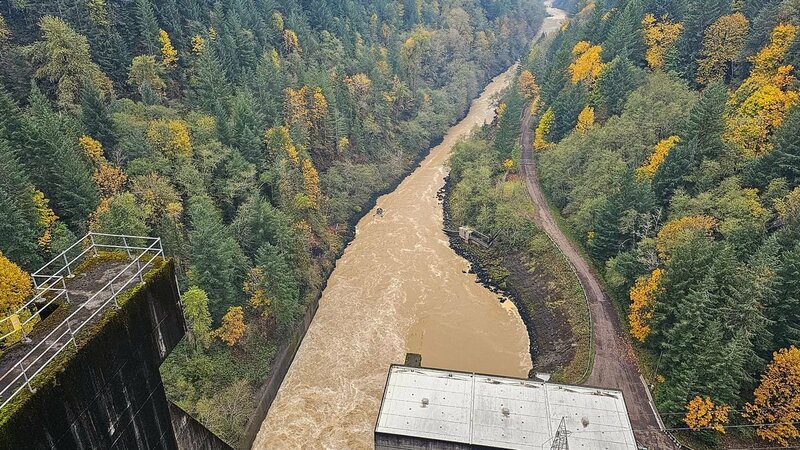Several cities in Oregon’s Willamette Valley have seen excessively muddy water flowing into their drinking water systems as a result of upstream reservoirs being drained, the Salem Statesman Journal has reported.
The Statesman Journal first broke the news last week that the U.S. Army Corps of Engineers’ deep reservoir drawdowns, done because of a court order to aid migrating salmon populations, were taxing community water plants and causing private wells to dry up. This week, the newspaper reported that while the water remains safe to drink, the city of Sweet Home had staff working 24 hours per day to filter it and some residents had switched to bottled water because of their tap water’s color and smell.
The strain on drinking water plants is an unintended consequence of measures that environmental advocates, tribes, many scientists and a federal judge consider the best opportunity to save endangered salmon in the Willamette River valley.
Baby salmon who need to migrate to the ocean often get trapped in reservoirs behind the dams, which on some Willamette tributaries block between 70% and 100% of the fish’s historic spawning habitat. Drawing reservoirs down to nearer their original riverbeds is meant to flush the young salmon through gates in the dam wall that are usually too deep underwater for the fish to find. A judge ordered the drawdowns in 2021 after a lawsuit from several environmental groups alleging the Corps’ dam operations were jeopardizing salmon populations.
In October, OPB and ProPublica reported on the Corps of Engineers plan to build massive floating fish collectors to trap and truck salmon past dams, to avoid the need for drawdowns on certain reservoirs. OPB and ProPublica reported that scientists have cast doubt on the effectiveness of the $1.9 billion Corps plan, and that many of the interests the Corps said it needed to protect by maintaining reservoirs — namely electric utilities, farmers and recreational boaters — would be only marginally impacted by drawdowns each fall.



 Water
Water


